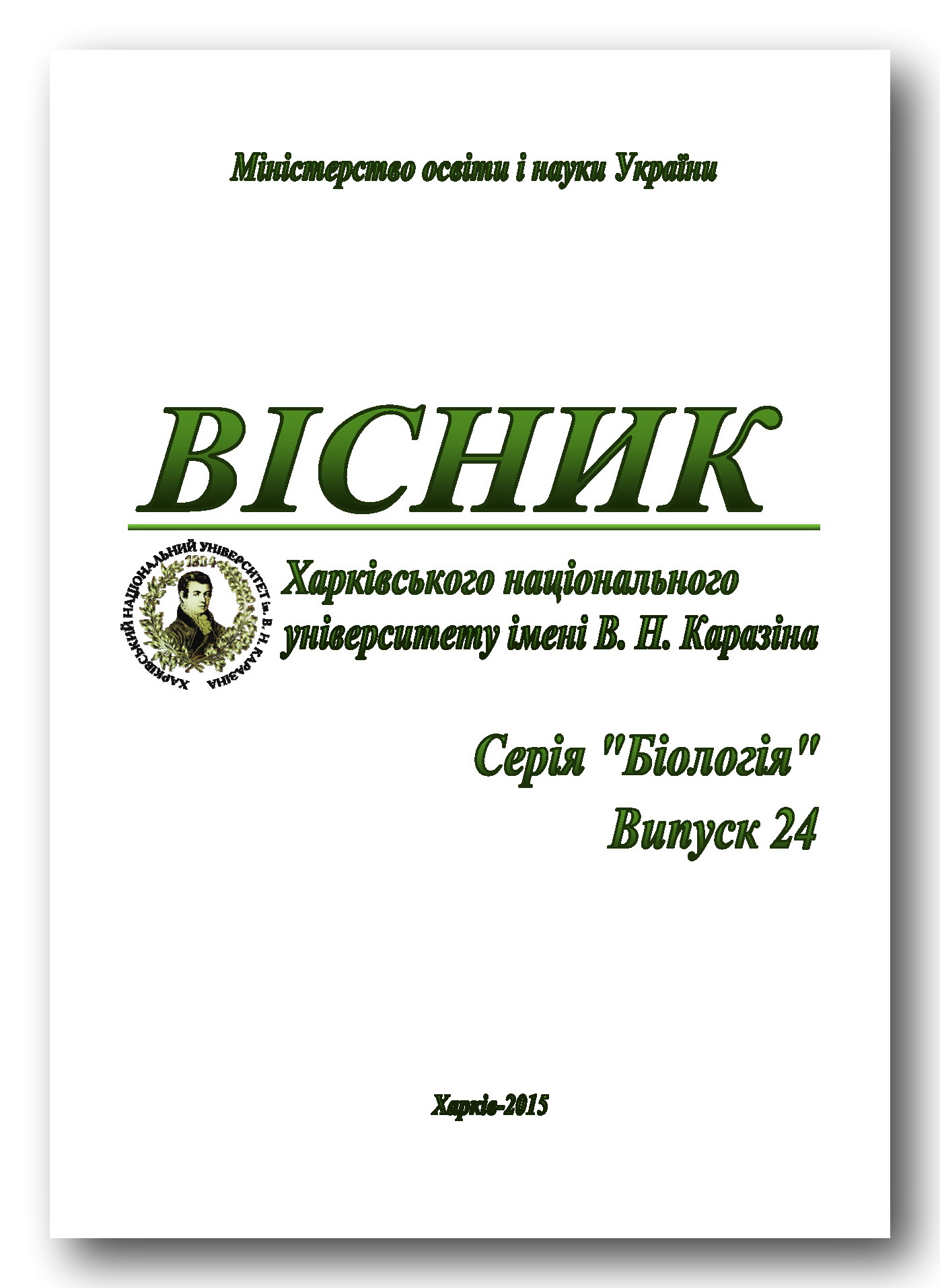The S-100b protein level changes in the different brain areas of gerbils at aging and alpha-ketoglutarate effect
Abstract
S-100b protein is often used as a marker of astrocytes, especially at brain damage (cortical, ischemic, etc.). The paper presents the dynamics of the concentration of S-100b protein in the cerebellum, thalamus and hippocampus of Mongolian gerbils to determine the reference data on the level of this protein in the brain during ontogenesis. The concentration of S-100b protein elevated in the brain to the level of adult animals at 30 days of postnatal development (increase was of almost 4 times compared to newborns animals). At aging hyperactivation of S-100b production was noted in the cerebellum and hippocampus, which may indicate the activation of calcium-dependent mechanism of astrogliosis that lead to inhibition of neurophysiological processes that are provided in these parts of the brain (the coordination of movement, learning and memory). The long-term diet with 2% of alpha-ketoglutarate for 6 months prevents overproduction of S-100b in the hippocampus in older animals.
Downloads
References
Етика лікаря та права людини: положення про використання тварин у біомедичних дослідах // Екпериментальна та клінічна фізіологія та біохімія. – 2003. – Т.22 (2). – С. 108–109. /Etyka lіkarya ta prava lyudyny: polozhennya pro vykorystannya tvaryn u bіomedychnykh doslіdakh // Ekperymental'na ta klіnіchna fіzіologіya ta bіokhіmіya. – 2003. – T.22 (2). – S. 108–109./
Нго Т.Т., Ленхофф Г.М., Яклич А. Иммуноферментный анализ. – М.: Мир, 1998. – C.444. /Ngo T.T., Lenkhoff G.M., Yaklich A. Immunofermentnyy analiz. – M.: Mir, 1998. – S.444./
Фоменко О.З., Ушакова Г.О., Пієржиновський С.Г. Протеїни астроглії у мозку щурів в умовах експериментального хронічного гепатиту та дії 2-оксоглутарату // Укр. біохім. журн. – 2011. – Т.83 (1). – С. 69–75. /Fomenko O.Z., Ushakova G.O., Piyerzhynovskyy S.G. Proteiny astroglіi u mozku shchurіv v umovakh eksperymental'nogo khronіchnogo gepatytu ta dіi 2-oksoglutaratu // Ukr. Biochem. J. – 2011. – Vol.83 (1) . – P. 69–75./
Beharier O., Kahn J., Shusterman E. S100B – a potential biomarker for early detection of neonatal brain damage following asphyxia // J. Matern. Fetal Neonatal. Med. – 2012. – Vol.25 (9). – P.1523–1528.
Bouzier-Sore A.K., Pellerin L. Unraveling the complex metabolic nature of astrocytes // Front. Cell Neurosci. – 2013. – Vol.11 (7). – P.179.
Bradford M.M. A rapid and sensitive method for the quantitation of microgram quantities of protein utilizing the principle of protein-dye binding // Anal. Biochem. – 1985. – Vol.72. – P. 248–254.
Débora G.S., Bruna B., Onofre D.S. et al. Characterization of adult rat astrocyte cultures // PLoS One. – 2013. – Vol.8 (3). – P.60282.
Ge W.P., Jia J.M. Local production of astrocytes in the cerebral cortex // Neuroscience. – 2015. – pii: S0306-4522(15)00789-7.
Kadala A., Verdier D., Morquette P. et al. Ion homeostasis in rhythmogenesis: the interplay between neurons and astroglia // Physiology (Bethesda). – 2015. – Vol.30 (5). – P. 371–388.
Linnemann D., Skarsfelt T. Regional changes in expression of NCAM, GFAP, and S 100 in aging rat brain // Neurobiol. Aging. – 1994. – Vol.15. – P. 651–655.
Peskind E.R., Griffin W.S., Akama K.T. et al. Cerebrospinal fluid S100b is elevated in the earlier stages of Alzheimer’s disease // Neurochem. Int. – 2001. – Vol.39. – P. 409–413.
Pierozan P., Zamoner A., Soska В.K. et al. Signaling mechanisms downstream of quinolinic acid targeting the cytoskeleton of rat striatal neurons and astrocytes // Exp. Neurol. – 2012. – Vol.233 (1). – P. 391–399.
Sheng J.G., Mrak R.E., Rovnaghi C.R. et al. Human brain S100 beta and S100 beta mRNA expression increases with age: pathogenic implications for Alzheimer’s disease // Neurobiol. Aging. – 1996. – Vol.17. – P. 359–363.
Wu Y., Zhang Ai-Qun, Yew D.T. Age related changes of various markers of astrocytes in senescence-accelerated mice hippocampus // Neurochem. Internat. – 2005. – Vol.46. – P. 565–574.
Zhang P.W., Haidet-Phillips A.M., Pham J.T. et al. Generation of GFAP::GFP astrocyte reporter lines from human adult fibroblast-derived iPS cells using zinc-finger nuclease technology // Glia. – 2015. – doi:10.1002/glia.22903.
Authors retain copyright of their work and grant the journal the right of its first publication under the terms of the Creative Commons Attribution License 4.0 International (CC BY 4.0), that allows others to share the work with an acknowledgement of the work's authorship.




